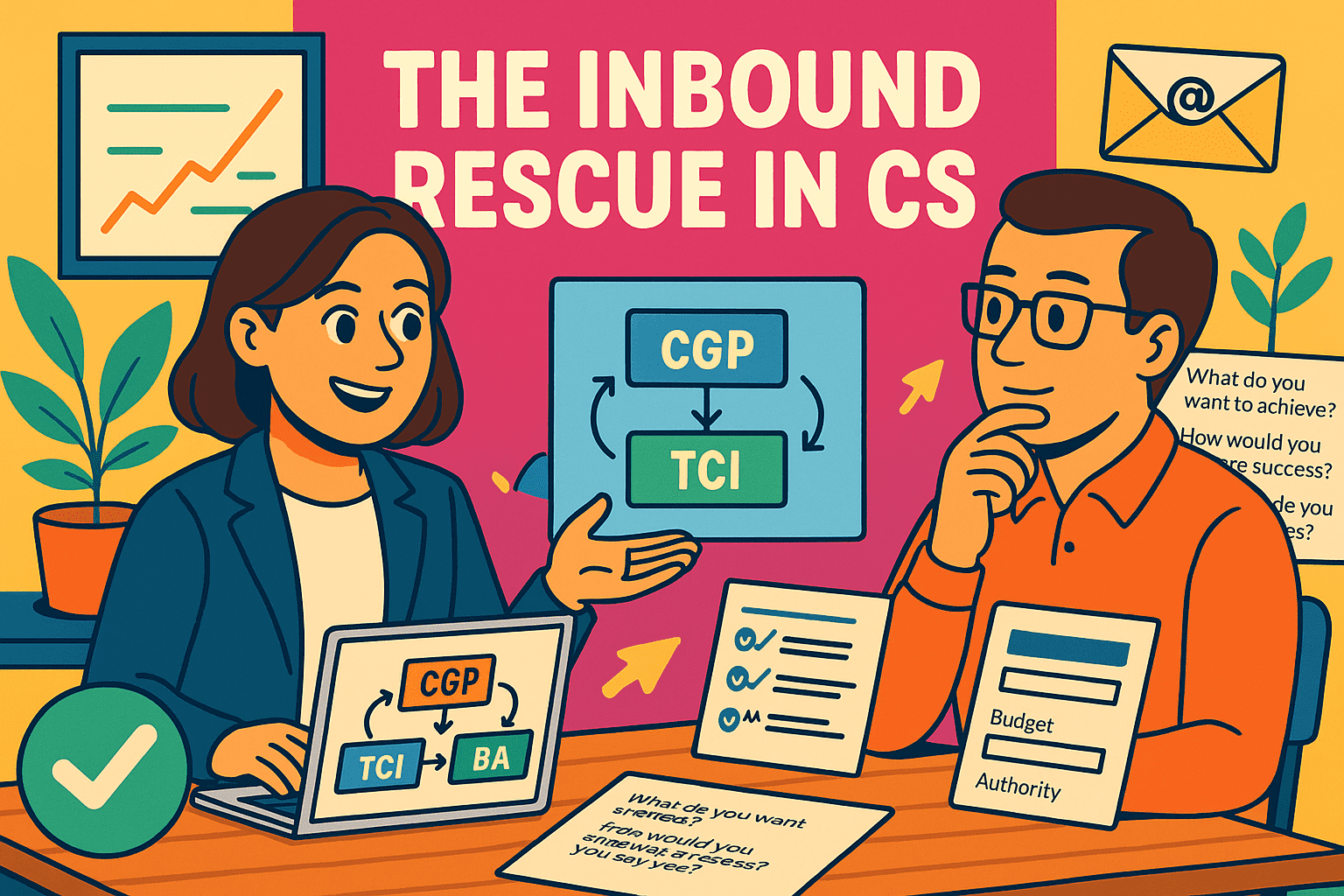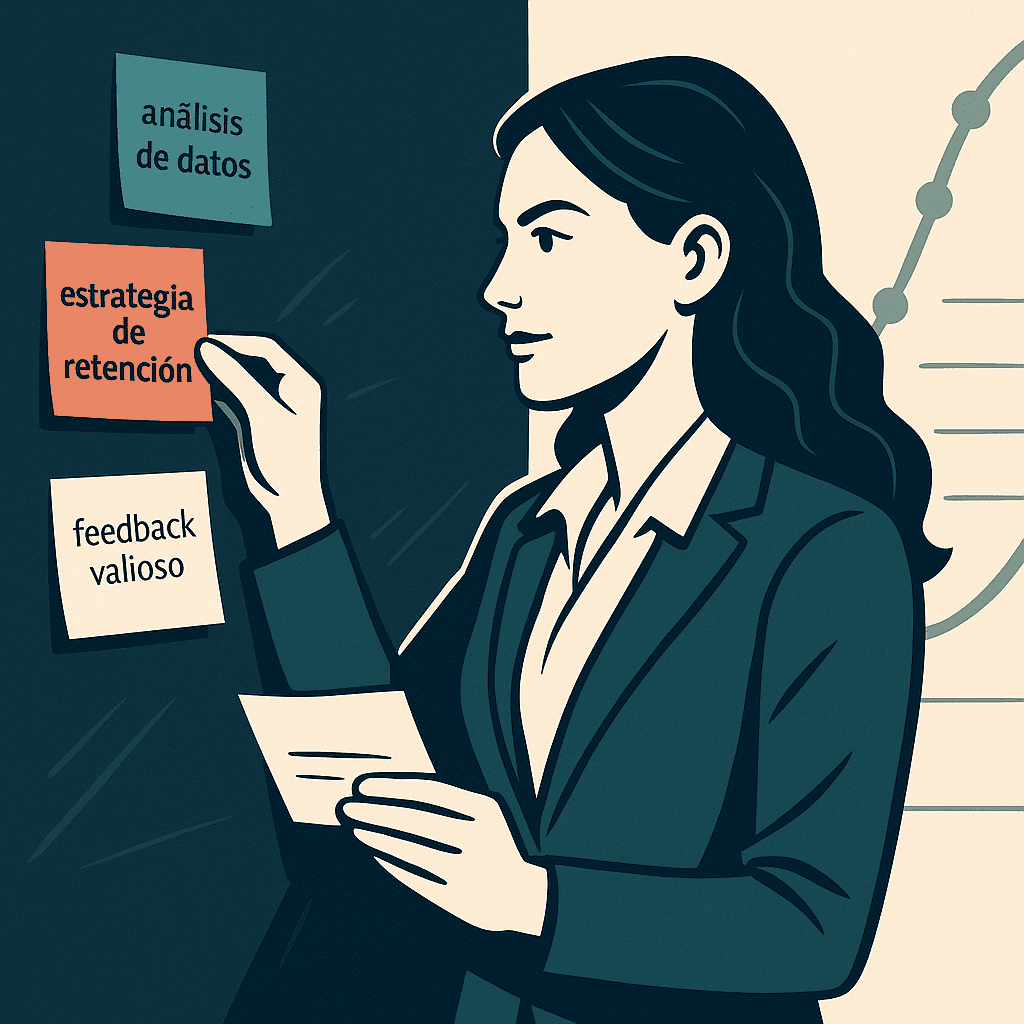
Inbound Discovery: A Smarter Alternative to Post-Sale Chaos
We’ve all been there.
A client signs the contract. The onboarding meeting is booked.
You open the CRM… and guess what: nothing.
No notes, no context, no clear promises. Just a blank account and a looming question: now what?
Sure, you could pick up the phone and call Sales for a summary. And yes, they might give it to you. But what if I told you that this last-minute patch is actually the symptom of a deeper problem?
Because what’s broken isn’t the data—it’s the system.
This isn’t another rant about the disconnect between Sales and Customer Success. My intention is to invite you to rethink discovery from a new perspective: inbound, distributed, automated, and strategic.
🚫 What You Can’t Normalize as a CSM
As CSMs, there are three things we must stop accepting as normal:
- Starting without context.
- Making clients repeat themselves. Nobody likes retelling their story over and over again like they’re stuck in a call center loop.
- Improvising every first conversation as if it’s the first time you’ve seen the account.
And yet, we do it all the time. It’s part of the chaos we work in.
That’s why I urge you to rethink your approach—because this isn’t fixed by calling Sales. It’s fixed by design.
“What I need now is to configure it ASAP. I already told Pablo in my last email.”
Pablo? I had no idea who Pablo was or what they discussed. No notes. No Slack messages. No CRM trail.
The client had to repeat everything. Their energy dropped. That initial excitement? Gone.
Lack of continuity doesn’t just kill efficiency—it erodes trust.
🧭 What’s a Discovery Workshop—And Why Isn’t It Always the Answer?

Discovery Workshops are useful—I use them. Especially in complex implementations or when multiple stakeholders are involved. They help align goals, surface risks, and design a shared roadmap.
But let’s be honest:
- They require coordination and time.
- They’re not scalable.
- They’re not always timely.
- And for smaller or mid-tier accounts, they’re overkill.
I once ran a full workshop for a well-known institution. Five stakeholders, multiple agendas. It was valuable, but took three weeks to align schedules and another for prep and follow-up.
So what do you do when a workshop isn’t realistic?
Do you give up? Improvise? Or design something better?
✨ The Inbound Approach as Ongoing Discovery
It was Monday. A client signed on Friday. The onboarding meeting was booked, but
no notes. No emails. No clue what to activate, or what quick win to pursue.
Could I have pinged Sales? Of course. But I already knew the answer:
“Let me check,” “I’ll get back to you,” or a 30-second voice note that solves nothing.
So instead, I used a system that now lives in my CS playbook:
- ✅ A post-signature automated email tailored by segment/industry, with a recap, value preview, and links to case studies and micro-videos.
- ✅ A short form with three key questions:
- What do you want to achieve?
- How would you measure success?
- What convinced you to say yes?
- ✅ A CRM scan to check engagement: downloaded assets, open rates, webinar signups.
🎯 The result?
“I saw you’re looking to streamline your audit process. Should we focus the session on that?”
The client replied:
“Thanks. You’re clearly prepared. This already feels different.”
That’s inbound.
Not reaction—anticipation. Not marketing—CS strategy.
And the best part?
You can implement it without needing Sales, Product, or Support.
🛠️ The CGP – TCI – BA Framework, Reimagined for CS
Here’s where strategy becomes action.
The CGP – TCI – BA model from inbound sales is now a CS framework:
CGP – Challenges, Goals, Plans
- What’s blocking the client today?
- What would success look like in 3, 6, or 9 months?
- What are they already trying? What’s not working?
TCI – Timeline, Consequences, Implications
- Are there internal deadlines, audits, or launches?
- What happens if nothing changes?
- What will they gain if it works?
BA – Budget, Authority
- Do they have the people/time to act?
- Who signs off or needs to be looped in?
👉 This isn’t just for onboarding—use it in QBRs, reactivation calls, or health checks.
📥 Want the full question set?
Subscribe to my newsletter—I’m releasing a downloadable guide soon.
🤝 But What If You Do Need a Workshop?
You don’t have to choose.
With inbound discovery:
- Your workshops are faster and better prepared.
- You know who’s missing before the meeting.
- You validate, not start from zero.
Inbound discovery + strategic workshop = winning combo.
📌 Final Thoughts
Don’t settle for “onboarded.”
Design for clarity, connection, and confidence from day one.
✅ You don’t need more meetings—you need more intention.
✅ You don’t need to wait for context—you need to create it.
Start redesigning your discovery process today.
I’m preparing a full downloadable pack with templates, question prompts, and automated flows.
Want early access? Comment, message me, or join the newsletter.
Because discovery isn’t about asking—it’s about listening, anticipating, and connecting.